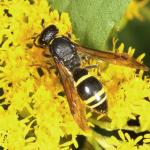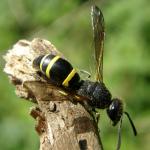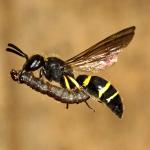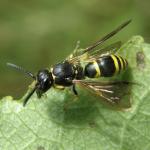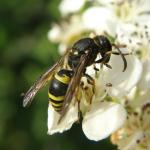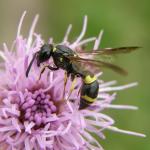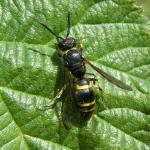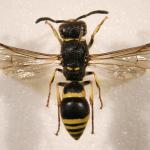Ancistrocerus trimarginatus (Zetterstedt, 1838)
Identification keys and general biology are given in Nielsen (1932), Spradbery (1973), Felton (unpublished), Richards (1980) and Yeo & Corbet (1995).
Throughout England and Wales including the Isle of Man. Also recorded from Ireland and the Channel Islands.
Overseas, found in many parts of mainland Europe (Norway, Sweden, Finland, Denmark, The Netherlands, France, Germany, Italy, Poland, Austria, Hungary, Greece and Romania) and across Asia to Mongolia, Sakhalin, Kamchatka and Japan.
This species is not regarded as being scarce or threatened.
Found in a wide variety of habitats similar to A. parietum (Linnaeus). Often associated with marshy places.
Probably univoltine; most likely to be seen June to August, sometimes during May and September, and rarely in April.
Small Lepidoptera larvae and sometimes chrysomelid larvae (Coleoptera).
A tube-dweller similar to A. parietum (Linnaeus) and A. gazella (Panzer). Also recorded nesting in disused galls of Andricus kollari (Hartig) (Hymenoptera: Cynipidae). Lomholdt (1975-76) reports nesting in hollow plant stems, shared with Ectemnius rubicola (Dufour & Perris).
Sea-holly, bramble, hogweed and thistles.
Chrysis angustula Schenck, C. impressa Schenck and C. mediata Linsenmaier (Morgan, 1984).
1998


